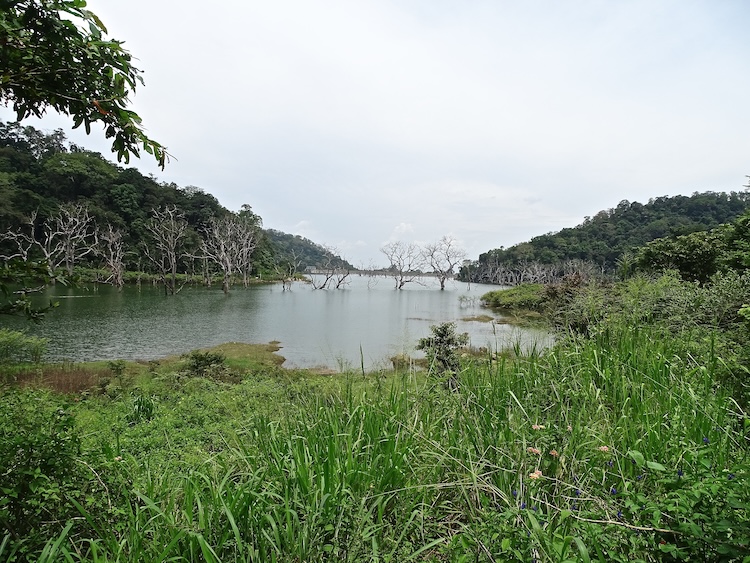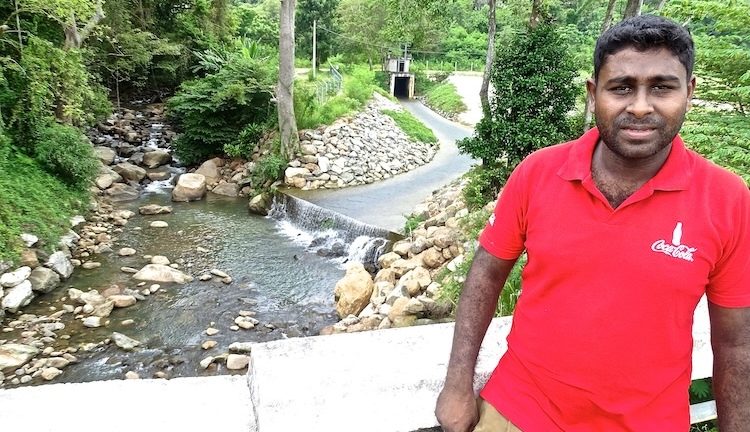By Kalinga Seneviratne
ALIKOTA ARA, Wellawaya, Sri Lanka | 2 May 2024 (IDN) — Iran’s President Ebrahim Raisi made a one-day visit to Sri Lanka on 24 April amid tight security to declare open an Iran-assisted mega power and agricultural development project that would provide power to the national grid and water to farmers in the dry south-eastern part of Sri Lanka that will open an estimated 4500 hectares of land for rice cultivation.
The ‘Uma Oya Multipurpose Project’, featuring two dams and a 120-megawatt power plant constructed by Iranian contractors, is hailed as one of Sri Lanka’s largest civil engineering endeavours. In 2010 when the project was launched, Iran through its Export Development Bank of Iran (EDBI) was to provide a soft loan of $516 million to fund the project. But, after giving $50 million of initial funding, Iran was forced to stop the funding because of Western-imposed economic sanctions in 2013. However, the Sri Lankan government continued the project with funding with the assistance of over 400 Iranian engineers from the FARAB Engineering Company who did the consulting, designing, and implantation.
The purpose of the project is to improve irrigation of 5000 acres of agricultural land, transferring 145 million cubic meters of water and generating 290 GW/h of power in a year.
In ancient times, both Persia (Iran) and Anuradhapura (Sri Lanka) used sophisticated agricultural systems based on irrigation canals and lakes. The Uma Oya project reflects how modern technology is used to restore this ancient irrigation system in Sri Lanka. During the ceremonies on 24 April, both Dr Raisi and Sri Lankan President Ranil Wickremesinghe emphasised that this project is a classic example of successful South-South cooperation despite many obstacles.
But at this village, where a 15 km long tunnel drilled by Iranian engineers brings water from the lakes upcountry to be deposited into a newly created lake (reservoir) for distribution by canals and streams further down to the dry zones near Hambantota, a development dilemma is visible—which is more sociological and political.
In creating the Alikota Ara reservoir at this village of Nagolla, near the provincial town of Wellawaya in south-eastern Sri Lanka, a whole village has been submerged and hundreds of people displaced.
The farmer Rohita Jayasinghe
“The land that is submerged was a village”, Rohita Jayasinghe, a farmer told IDN, speaking from the bund of the lake that used to be his village. “It was a very difficult place to live,” he recalls. “There was not even a road. There were paddy fields and a river. We had to cross the river to get to the village and no bridge or road there. We had pepper, coconut, paddy and all that land is now flooded.”
“People were given compensation for the land and new paddy fields,” he pointed out. “Those who got money for the land, they have bought 10-15 perches in the neighbourhood and built homes”.
Jayasinghe argues that the Uma Oya project has brought a big improvement to the area. A road has been built around the bund of the new lake and people who have bought land up there can live with connectivity to the town. “Now water is taken through pipes and canals to the Hambantota area and new tanks are being built to store it. Already two existing tanks will get water from the scheme to help farmers in Maha Ara,” he added.

Neighbours Piyadasa and his wife Wimalawathi
But his neighbours Piyadasa and his wife Wimalawathi are not happy. With no farming land, they have set up a small shop in his new home by the roadside.
“The project is good but it’s our properties that got affected by it. We are happy that the country could develop. But we lost our paddy fields, coconut and other fruit trees,” complained Piyadasa. “We were given land in Maha Ara but we haven’t been able to farm on it yet. I have left a little bit of my land here and I have set up a shop, but income is not enough for us. I would like to do farming, there but the land is still not in our possession.”
Though the land has been given to them in writing by the government as compensation for the flooding of their paddy field, Piyadasa says that land is being farmed by others and they are refusing to vacate it. “That land is not owned by the people there. We were given the land saying it is government land, but people are farming on it. They say that they have farmed on the land for a long time, so they own it and don’t want to give it away,” complains Piyadasa.
A technical assistant to the Iranian drilling team
Jeewan Bandara, the son of a local farmer who worked as a technical assistant to the Iranian drilling team of the tunnel that has flooded his village appreciated the skills that he got and showed IDN his certificate. Because his parents lived up the hills here, their property is intact, and he lives with them now. His paddy fields have been submerged by the reservoir and the land given to him at Maha Ara for farming is too far to go, he complains.
“We got compensation for the land that was taken over for the reservoir but not for our plot of land used to build the road,” he told IDN. “We can’t fight with the government. They argue that if we can fend for ourselves here, we need to give preference to others who cannot fend for themselves. So, we need to sacrifice.” That he argues is the recipe to protect the corrupt at the local level.
Bandara explained that those who are farming on the land that have been allocated to those whose land was submerged here, have formed a farmers’ association of over 100 people and are probably bribing the local officials and politicians to stay on illegally.
“It is all politics,” he argues. “The people there get around their provincial politicians and say they will vote for them and get the politicians to support them. We didn’t go to canvass them because we live here under different politicians”.
Bandara says that after the Uma Oya water came here, the Nagolla community has a road that has been built around the reservoir to their home. There was no road before. Thus, he is now looking at a different type of livelihood. With clean water streams and an abundance of greenery, the area has lately begun to attract tourists, both local and foreign.
“I want to set up a small café with local cuisine because now a lot of tourists come this way. There is very clean water in these streams, and I have a three-wheeler that can be used to transport tourists. I also grow some vegetables in the plots that remain (on his parents’ land). I’m thinking of making my home a hotel (homestay),” he told IDN.
Jayasinghe says that the people who have been squatting and farming on the land at Maha Ara were able to farm only during the rainy season. “Now you can farm all year with the new water that will be available,” he notes. “A new set of government officials are now trying to resolve the problem (to let people who were given the land as compensation come and farm on it) and if it’s solved that will bring good benefits for the people here.”
“This is a big project and surely people are going to benefit a lot from this,” argues Jayasinghe. (Former President) Mahinda Rajapakse should get a lot of credit for having started this project. We should also thank the Iranian government for helping.” [IDN-InDepthNews]
Photo: Jeewan Bandara, the son of a local farmer who worked as a technical assistant to the Iranian drilling team of the tunnel that has flooded his village, appreciated the skills that he got. Credit: Kalinga Seneviratne.


